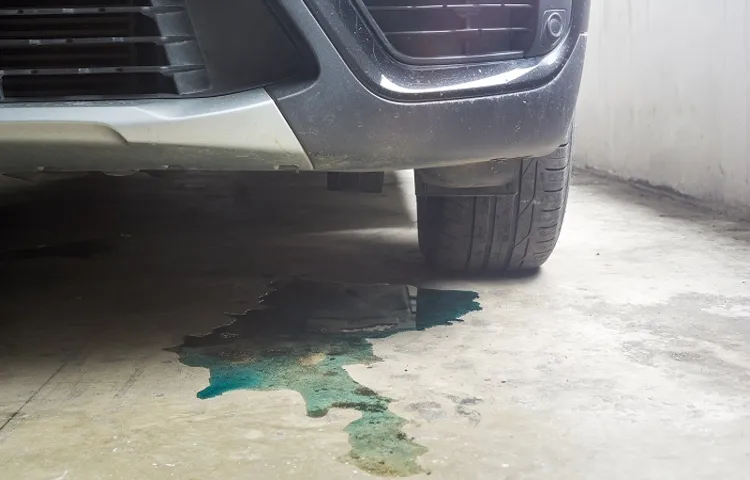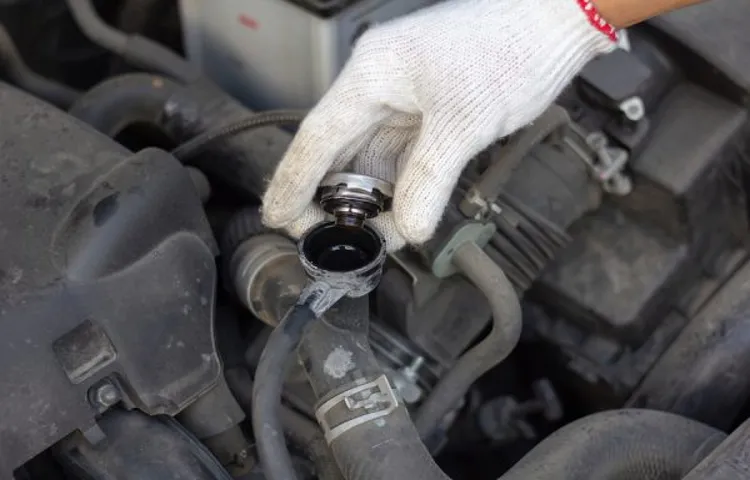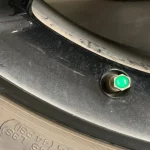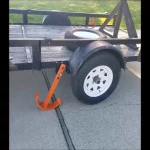Have you noticed a sweet smell coming from under the hood of your car? Or maybe you’ve noticed a puddle of green or orange liquid underneath your vehicle? These are signs of a coolant leak, and it’s essential to diagnose the problem promptly. Ignoring the issue can ultimately lead to engine failure or other major repairs down the road. In this blog, we will share some tips and tricks to help you diagnose a coolant leak before it’s too late.
From checking for visible leaks to inspecting your engine’s components, we will cover everything you need to know about diagnosing and fixing a coolant leak. So, buckle up and let’s get started!
Table of Contents
What is a Coolant Leak?
A coolant leak is a common problem among car owners. It is the gradual loss of coolant fluid from the engine’s cooling system. This could be caused by a number of things, including a cracked radiator, a blown head gasket, or a damaged water pump.
A coolant leak can be identified by a noticeable drop of fluid from under the car. It is important to diagnose a coolant leak early on to prevent engine damage and avoid costly repairs. One way to diagnose a coolant leak is to check the coolant level in the reservoir regularly.
If the level drops below the minimum mark, then there is likely a leak. Another way is to inspect the hoses and connections in the cooling system for any signs of wear or damage. If a leak is suspected, it is best to have a professional mechanic inspect and repair the issue as soon as possible to prevent further damage to the engine.
Understanding the Basics of Engine Coolant
A coolant leak occurs when the fluid that helps regulate and maintain a safe operating temperature in your vehicle’s engine system escapes from its proper location. This is a common issue that can cause serious problems if not addressed promptly. Signs of a coolant leak include low levels of coolant in your reservoir, overheating engine, sweet smell, visible puddles under your car, and white smoke coming from the exhaust.
Coolant leaks can have many causes, ranging from a damaged radiator to corroded seals or hoses. It’s important to have your vehicle inspected by a professional mechanic to identify and repair the source of the leak to avoid engine damage and costly repairs. Always make sure to keep an eye out for any signs of a coolant leak to ensure the safety and longevity of your vehicle.

Signs of a Coolant Leak in Your Vehicle
A coolant leak occurs when the coolant fluid escapes from a vehicle’s cooling system. This can happen due to various reasons, such as a damaged hose, a faulty radiator, or a damaged water pump. Coolant leaks can be identified by a sweet smell in the engine compartment or underneath the car.
You may also notice a low coolant level in your vehicle or experience engine overheating. If left unchecked, a coolant leak can cause serious damage to your vehicle’s engine, leading to expensive repairs. It’s essential to have your vehicle inspected by a mechanic if you suspect a coolant leak.
Regular maintenance checks can help to prevent coolant leaks and keep your vehicle running smoothly. Remember, it’s better to take care of the problem now before it becomes a costly repair.
How to Diagnose a Coolant Leak
If you suspect a coolant leak in your car, don’t ignore it – overheating can result in costly repairs or even engine damage. The first step in diagnosing a coolant leak is to check your coolant levels. If you notice a significant drop in the level, it’s a good sign that there’s a leak.
You can also check for any visible signs of coolant around your engine or on the ground where you park. Coolant is usually green or pink and has a sweet smell, so if you see any stains or puddles that match that description, it’s a good sign you have a leak. Another possible sign of a coolant leak is steam or white smoke coming from your engine.
This can indicate that coolant is spreading and burning off due to a leak. Keep in mind that coolant leaks can be difficult to locate, so if you’re unsure or unable to find the source of the leak, take your car to a mechanic for a professional diagnosis. By taking action early, you can prevent more significant problems and save yourself time and money in the long run.
Check Your Coolant Level and Condition
If you suspect that you have a coolant leak, the first step is to check your coolant level and condition. This will give you an indication of whether or not you are losing coolant and if it is time for a top-up or replacement. The coolant should be checked when the engine is cold to avoid the risk of burns.
Open the hood and locate the coolant reservoir. The coolant level should be between the minimum and maximum marks on the reservoir. If the level is low, add a 50/50 mixture of coolant and water until it reaches the appropriate level.
The color of the coolant should be checked as well. If it appears discolored or cloudy, it may be time for a coolant flush. Additionally, inspect the reservoir and hoses for any visible leaks or cracks.
Remember, a coolant leak can cause damage to your engine if left unchecked, so be sure to address any issues promptly.
Inspect Your Vehicle for Visible Signs of Leaks
Diagnosing a coolant leak can be essential for ensuring the safety of your vehicle. One of the most apparent indicators of a coolant leak is the presence of a puddle of liquid under your car. This coolant fluid is typically green or yellow and has a sweet odor.
However, it can also be beneficial to inspect the engine to identify the source of the leak. Trace the location of the coolant reservoir and check for any wet or moist areas. The radiator, hoses, water pump, and thermostat housing are common sites where leaks occur.
If you notice any visible signs of damage or corrosion on any of these components, it is essential to fix the issue promptly to prevent further damage to the engine. Failure to address coolant leaks promptly can result in engine overheating, leading to costly repairs or even engine failure. So, if you spot a coolant leak, take your vehicle to an auto mechanic, and have them assess the issue to keep your car running smoothly.
Use a Cooling System Pressure Test Kit
If you suspect that your car is losing coolant but can’t see any visible leaks, it’s time to use a cooling system pressure test kit. This tool can easily help you diagnose the source of the leak by pressurizing the cooling system and checking for any drops in pressure. A coolant leak can be a serious issue, potentially causing your engine to overheat and leading to costly repairs.
By using a pressure test kit, you can quickly and accurately find the source of the problem and take the necessary steps to fix it. So don’t wait around for your engine to overheat, grab a coolant pressure tester and take control of the situation. Your engine will thank you for it!
Common Causes of Coolant Leaks
Diagnosing a coolant leak in your vehicle can be a daunting task, but there are some common causes that you can look out for. One possible cause is a damaged or worn out radiator. Over time, the radiator fins can corrode or become clogged with debris, leading to leaks.
Another possible culprit is a busted hose, which can be caused by wear and tear, heat, or pressure. A faulty water pump can also be responsible for coolant leaks. This component is responsible for maintaining proper coolant flow throughout the engine, so when it fails, leaks can occur.
A cracked engine block or cylinder head can also lead to coolant leaks. This is often caused by excessive heat or pressure, which can cause the metal to warp or crack. Regardless of the cause, it’s important to have any coolant leaks diagnosed and repaired as soon as possible to avoid further damage to your vehicle.
By keeping an eye out for these common causes, you can catch coolant leaks early and take the necessary steps to keep your vehicle running smoothly.
Damaged Radiator or Hoses
One of the common causes of coolant leaks is a damaged radiator or hoses. Radiators are responsible for cooling down the engine by passing the hot coolant through their fins, while hoses transport the coolant to and from the engine. Over time, these components can develop leaks due to wear and tear or physical damage.
For example, a worn-out radiator cap can cause high pressure in the cooling system, leading to leaks. Similarly, a damaged hose can crack or collapse, causing coolant to leak out. It’s essential to inspect these components regularly and replace them if necessary to avoid overheating and engine damage.
It’s also important to check the coolant level and color regularly as low levels and dirty coolant can indicate a leak. By taking care of your radiator and hoses, you can prevent coolant leaks and ensure your engine stays cool.
Defective Water Pump or Gasket
One common cause of coolant leaks in vehicles is a defective water pump or gasket. The water pump is responsible for circulating coolant throughout the engine and keeping it at the appropriate temperature. If the water pump or gasket is damaged or worn, it can lead to leaks and cause the engine to overheat.
Signs of a faulty water pump or gasket include coolant leaks, overheating, steam coming from the engine, and a sweet smell from the engine. It’s important to have these issues addressed as soon as possible to prevent serious damage to the engine. Regular maintenance and inspections can help identify and prevent these types of issues before they become a larger problem.
Remember, maintaining your vehicle’s cooling system is crucial for vehicle performance and longevity.
Fixing a Coolant Leak
If you notice that your engine is overheating or you smell a sweet aroma while driving, it could be an indication of a coolant leak. It’s important to diagnose the issue before it causes any serious damage to your vehicle. The first step to fixing a coolant leak is to identify the source.
Check all hoses, clamps, and connections to ensure that there aren’t any visible leaks. If everything appears to be in order, it’s possible that the leak is happening internally. In this case, you may need to take your vehicle to a mechanic for further inspection.
Another potential source of a coolant leak is a crack in the radiator or a blown head gasket. These issues can be difficult to detect without specialized tools, so it’s important to seek professional help if you suspect either of these as a culprit. By pinpointing the source of the coolant leak, you can prevent further damage to your vehicle and keep it running smoothly.
Determining Whether to DIY or Visit an Auto Repair Shop
When it comes to fixing a coolant leak in your vehicle, it’s important to consider whether to tackle the job yourself or take your car to a professional auto repair shop. While DIY repairs may save you some money, it’s not always the best option. If you’re not confident in your mechanical abilities or don’t have the necessary tools, it’s best to leave it to the experts.
Additionally, if the leak is serious or requires extensive repairs, a reputable auto repair shop with experienced mechanics may be your safest bet. On the other hand, if the leak is minor and you’re comfortable working with cars, fixing it yourself might be a viable solution. However, it’s always recommended to do your research and ensure you have a solid understanding of what the job entails before attempting it.
Ultimately, the decision to DIY or visit an auto repair shop will depend on the nature of the leak and your level of experience. It’s always better to err on the side of caution and seek professional help when in doubt.
Replacing Parts and Repairing Leaks
Dealing with a coolant leak in your vehicle can be a headache, but it’s important not to ignore it as it can lead to significant engine damage. The first step in fixing a coolant leak is to identify where it’s coming from. Check your hoses, radiator, and water pump for any signs of damage or corrosion.
Once you’ve identified the source of the leak, determine whether it can be easily repaired or if replacement parts are necessary. If it’s a small crack or hole, it may be possible to fix it with a sealant, but if the damage is extensive, you’ll need to replace the part. Remember to use the appropriate coolant type for your vehicle, as using the wrong one can lead to further issues.
Don’t hesitate to reach out to a professional if you’re unsure about how to handle the repair. With prompt attention to a coolant leak, you can avoid more significant and costly engine problems down the road.
Conclusion and Final Tips for Preventing Coolant Leaks
In the world of car maintenance, diagnosing a coolant leak can seem like an intimidating task. But fear not! By following these simple steps, you’ll be able to identify the source of the problem and remedy it in no time. Just remember to keep your eyes peeled for tell-tale signs such as puddles, steam, or a sweet smell.
And if all else fails, don’t be afraid to call in the professionals. Because as we all know, sometimes you just need a little extra help to keep your engine running smoothly – and your puns flowing freely!”
FAQs
What are the common signs of a coolant leak?
Some common signs of a coolant leak include low coolant levels, overheating engine, sweet smell coming from the engine, and a visible puddle of liquid under the car.
How do I locate the source of a coolant leak?
You can locate the source of a coolant leak by visually inspecting the engine, checking for leaks in the radiator and hoses, and performing a pressure test on the coolant system.
Can a coolant leak cause engine damage?
Yes, a coolant leak can cause engine damage if not addressed promptly. If the engine overheats due to low coolant levels, it can lead to warped or cracked cylinder heads, damaged pistons, and more.
How do I fix a coolant leak at home?
The fix for a coolant leak will depend on the source of the problem. Some common fixes include tightening loose clamps, replacing damaged hoses, and repairing or replacing a leaking radiator.
Can I still drive my car if it has a coolant leak?
It is not recommended to drive your car with a coolant leak as it can cause engine damage and a possible breakdown. It’s best to address the issue promptly and have it repaired before driving.
How much does it typically cost to repair a coolant leak?
The cost of repairing a coolant leak will depend on the source of the issue and the type of repair needed. Some repairs may be as low as $50, while others can cost upwards of $1,000.
What should I do if I suspect a coolant leak?
If you suspect a coolant leak, it’s important to address it promptly. Check your coolant levels and inspect the engine for any signs of leaking. If you’re unsure, take your car to a professional mechanic for an inspection.



